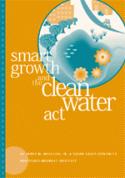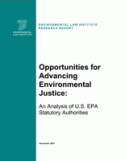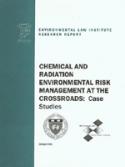
Research Reports
ELI publishes Research Reports available for free download that present the analysis and conclusions of the policy studies ELI undertakes to improve environmental law and policy. These reports contribute to education of the profession and disseminate diverse points of view and opinions to stimulate a robust and creative exchange of ideas. Those publications, which express opinions of the authors and not necessarily those of the Institute, its Board of Directors, or funding organizations, exemplify ELI’s commitment to dialogue with all sectors.
In January of this year Native Lands’ new map, Indigenous Peoples and Natural Ecosystems in Central America and Southern Mexico, was completed. It is an update of an earlier map, The Coexistence of Indigenous Peoples and the Natural Environment in Central America, published in 1992. Both maps were collaborative efforts between Native Lands and the National Geographic Society. The original map put on display forest cover and areas of indigenous use and occupation.
Read More >At sites throughout the country the Department of Energy (DOE) is cleaning up the radioactive and chemical contamination legacy of nuclear weapons production.
Read More >
Land uses directly and indirectly affect the quality of our nation`s waters. Various patterns of urban, suburban, exurban, and rural development can contribute either to improving water quality or to impairing it. At the same time, state and federal programs directed at controlling water pollution can influence development. The relationship between land use and water quality has been studied on a watershed scale in a number of settings, but there has never been a study of the relationship between the programs of the federal Clean Water Act (CWA) and state and local land uses.
Read More >
Environmental justice embodies a goal of achieving healthy, sustainable communities for all people. As part of this goal, environmental justice calls for equal protection for all people under the nation’s environmental laws.
Read More >
The environmental risk management challenges facing this nation today require that we break down the barriers that separate the chemical and radiation risk approaches. This process of risk harmonization is aimed at creating a consistent (but not inflexible) framework in which chemical and radiation risks can be managed to protect successfully public health and the environment and draw on the best features of each culture.
Read More >